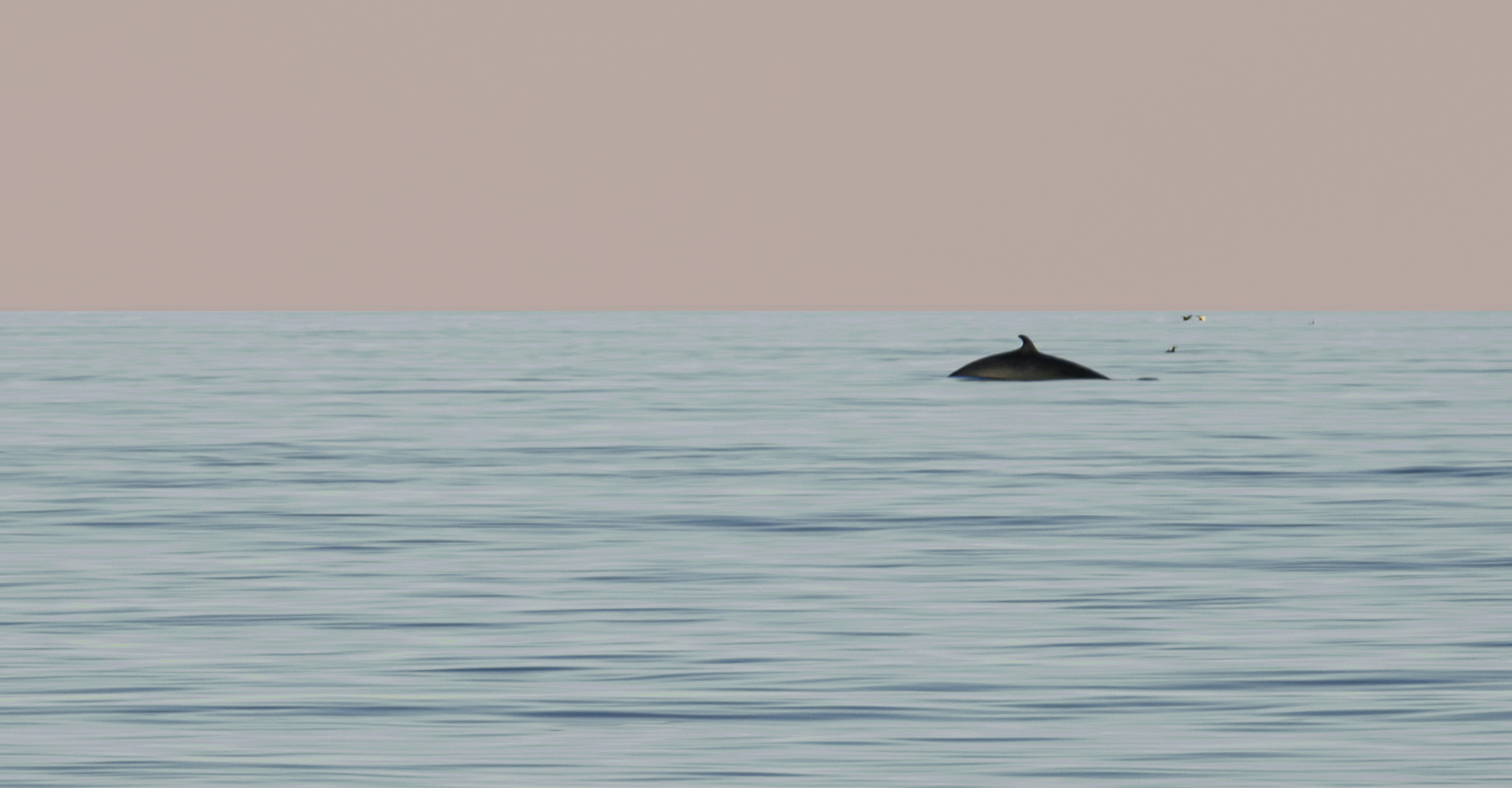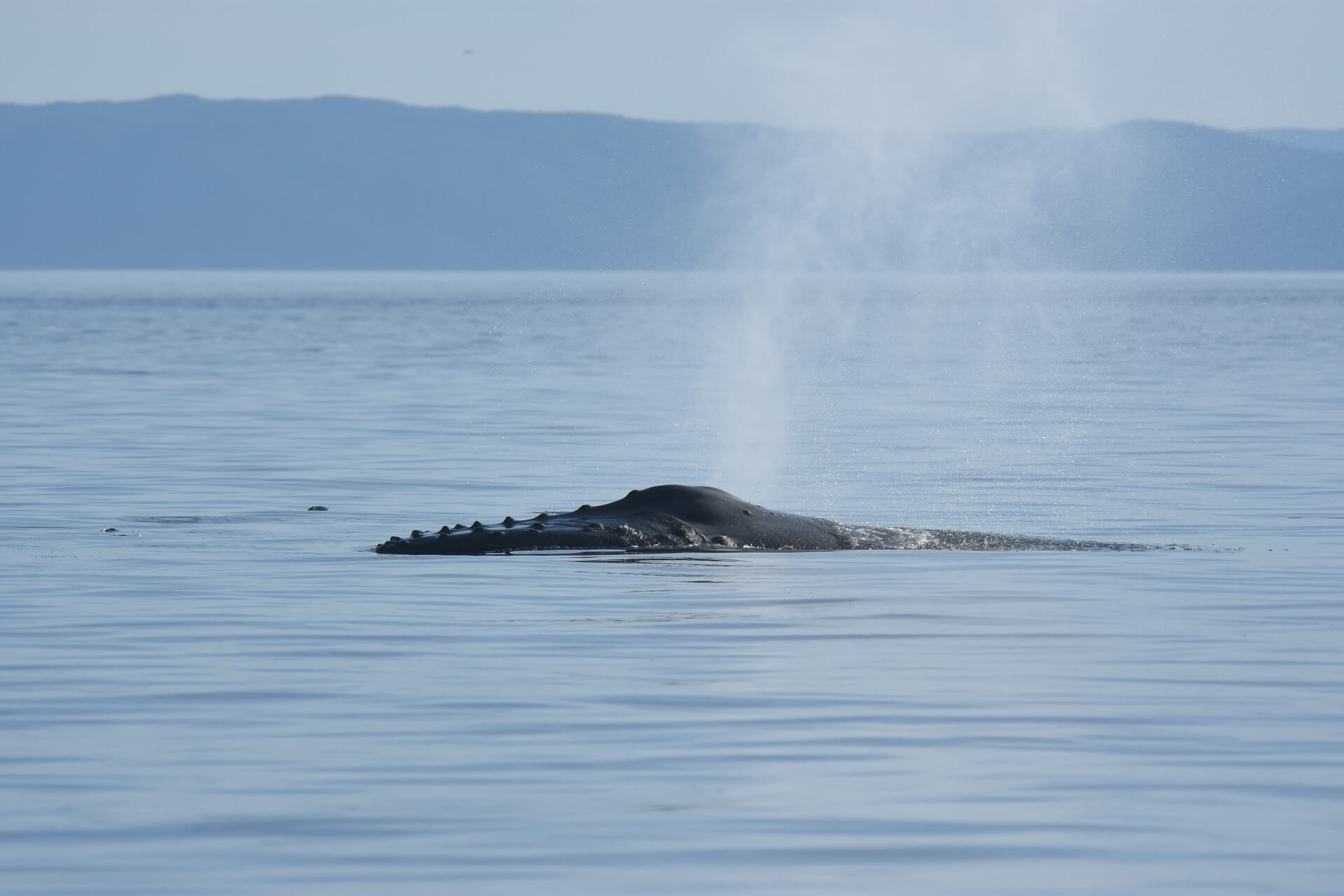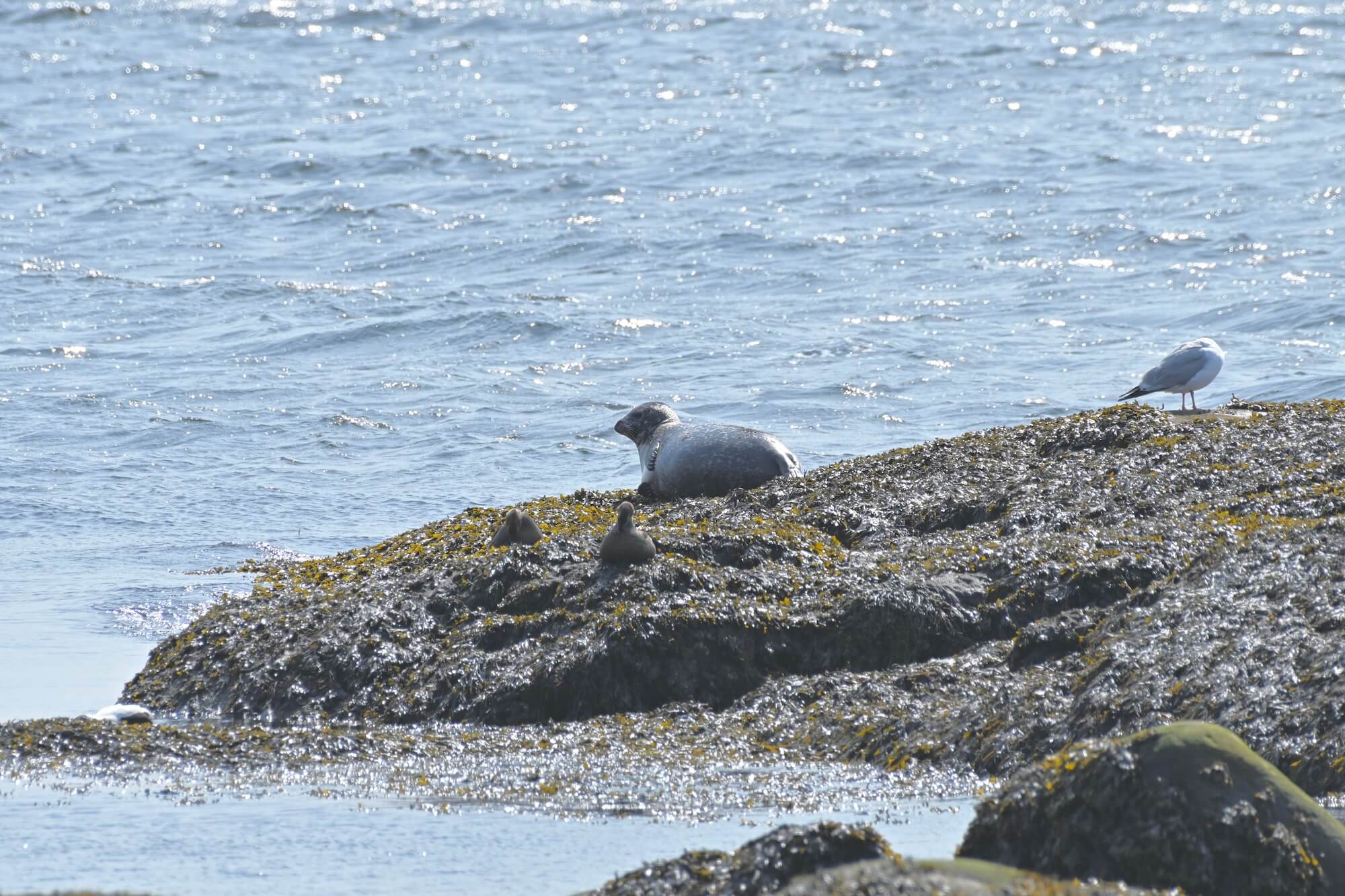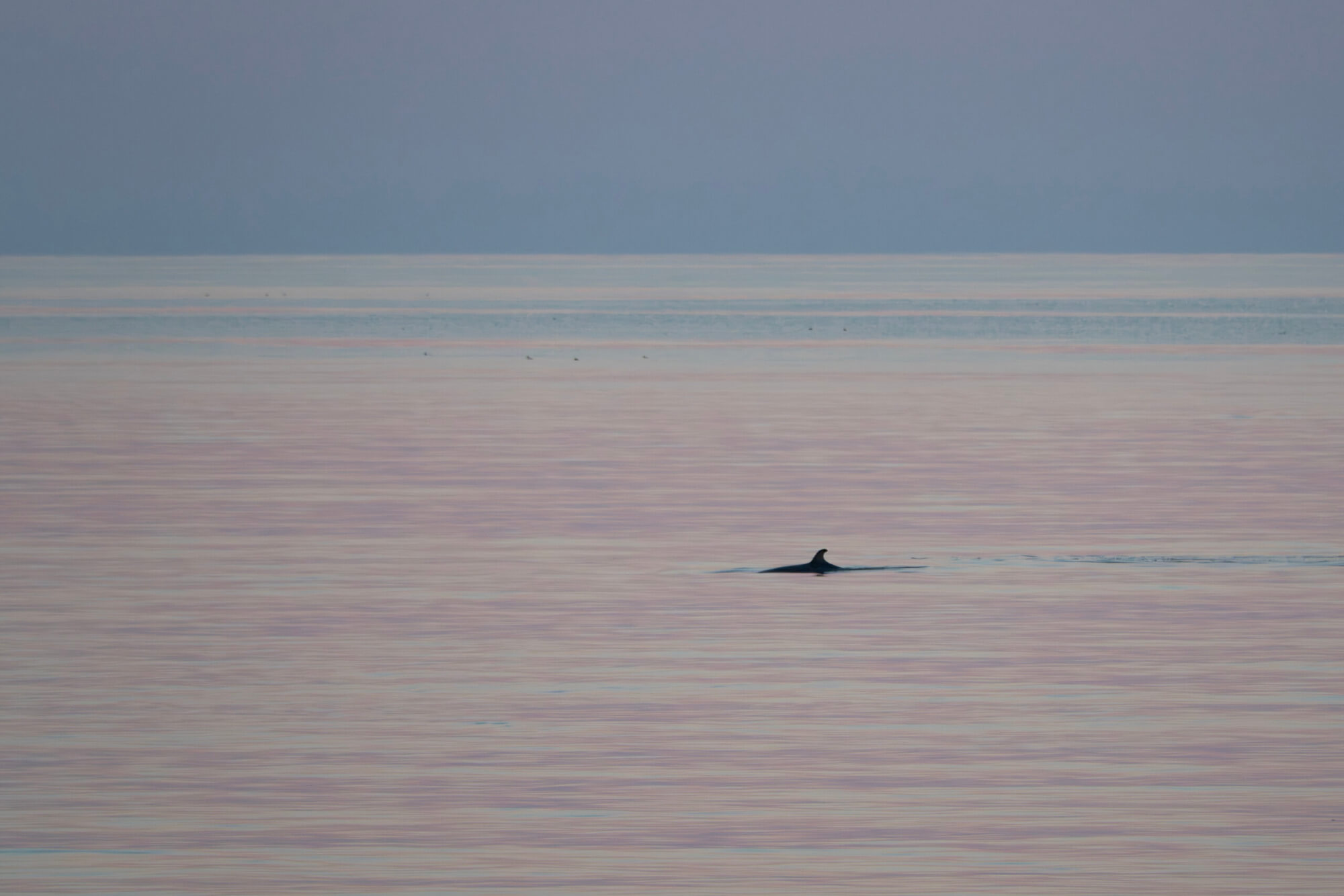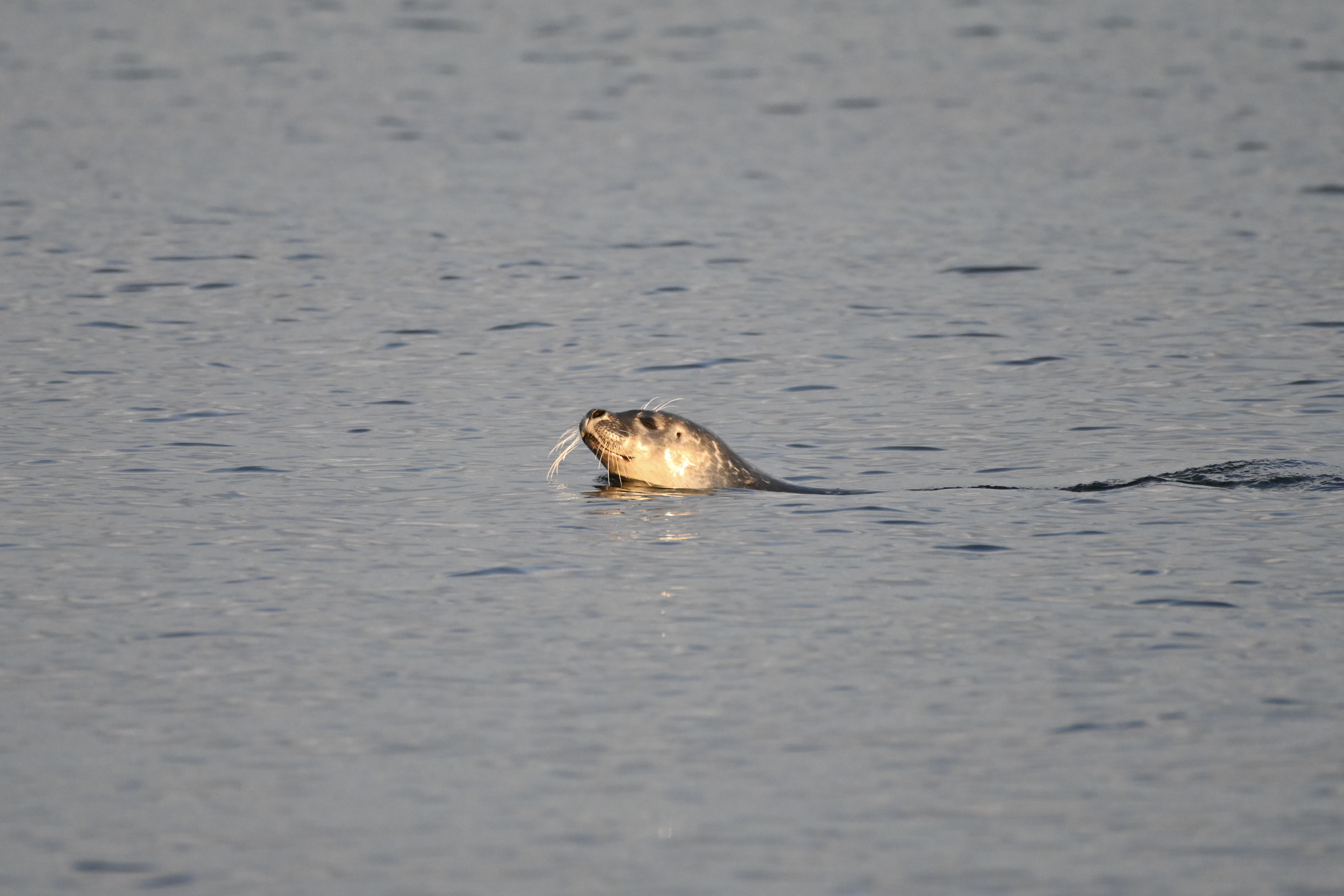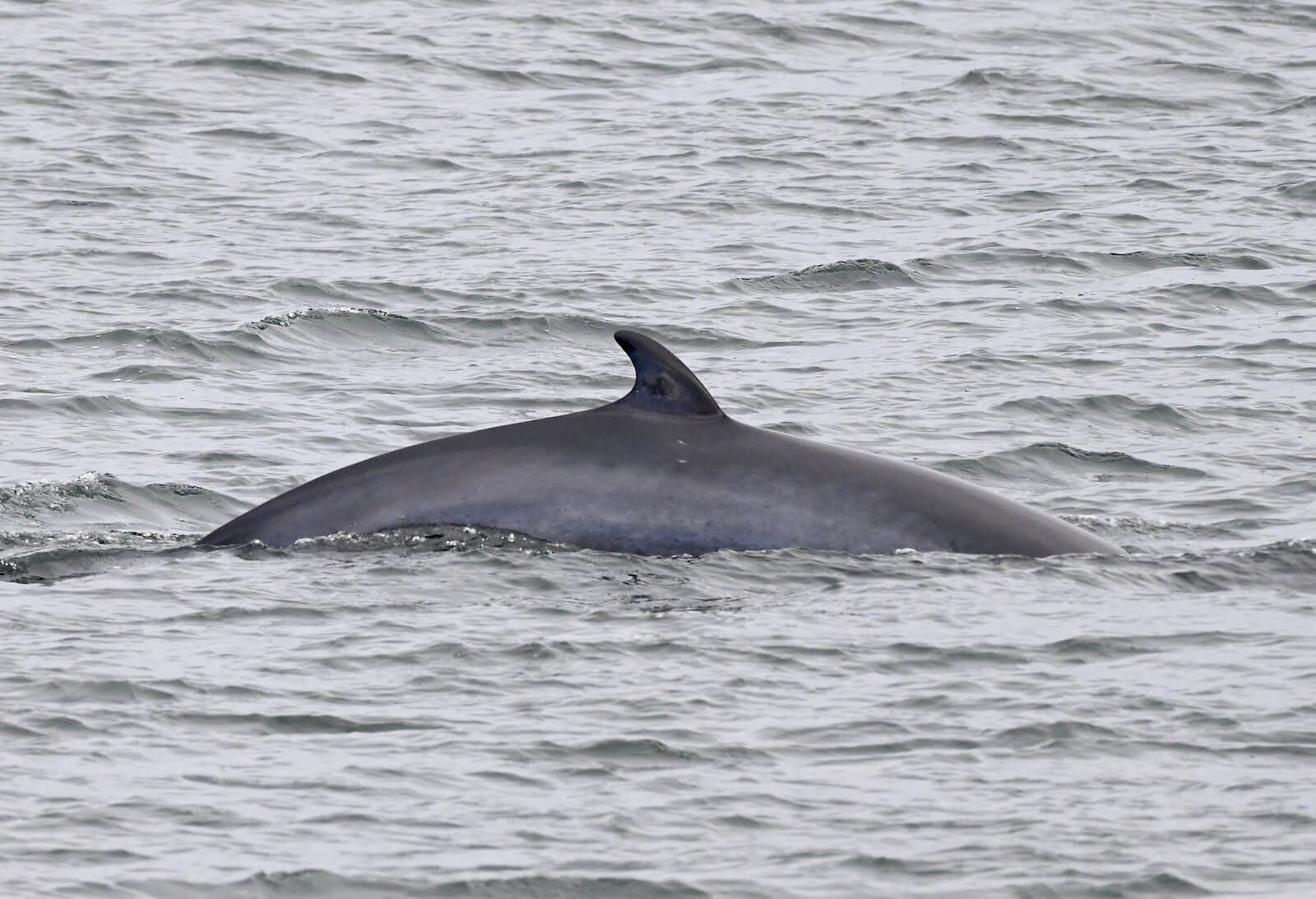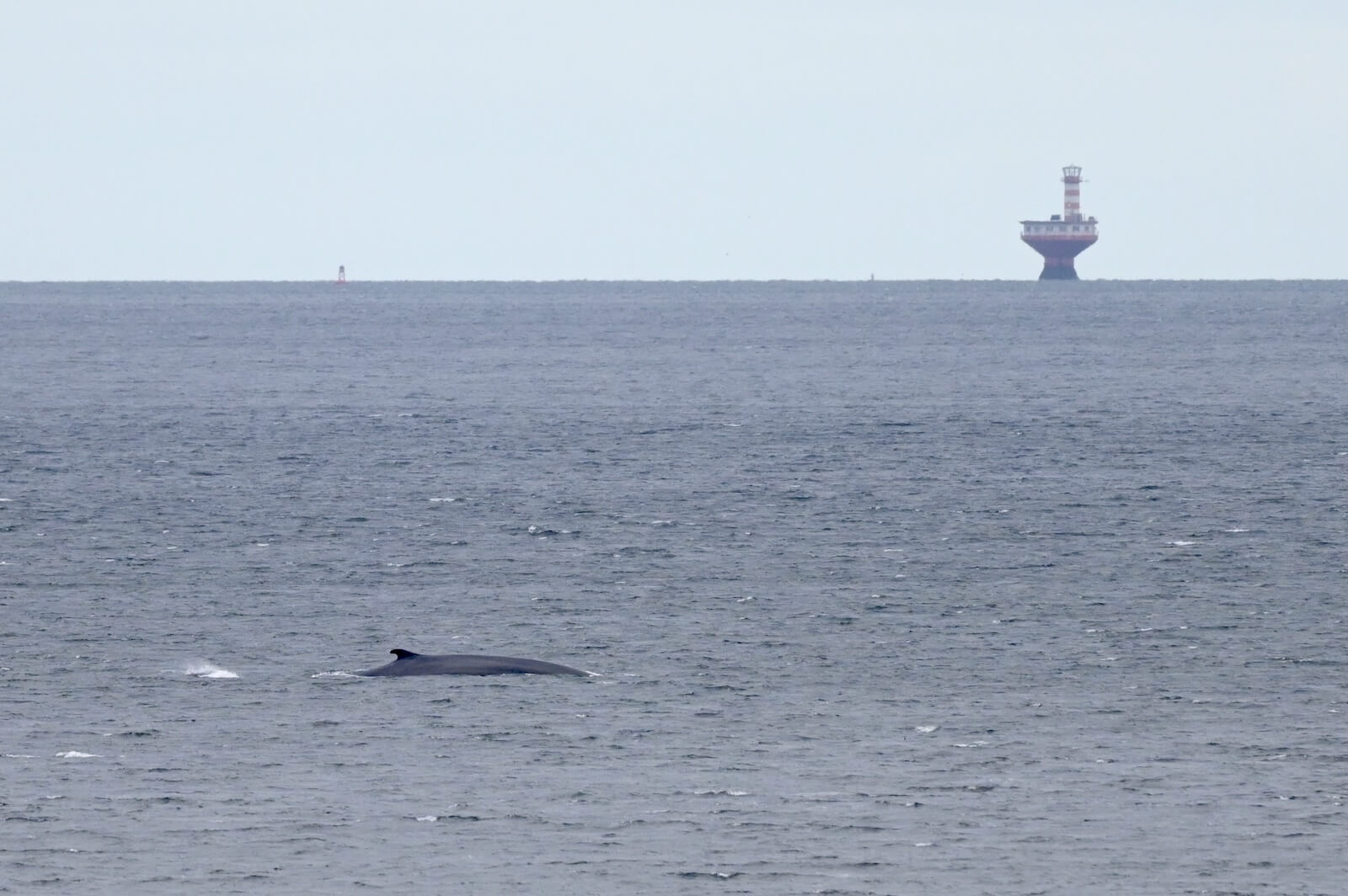Humpback whales are making their return to the estuary this week, much to the delight of the locals. Additionally, the white backs of belugas are regularly being spotted, a few minke whales have been passing through, and seals are still very present.
Humpbacks from Pointe-des-Monts to Les Bergeronnes
The powerful, balloon-like spouts of humpbacks have blurred the horizon and turned the heads of observers. In Pointe-des-Monts, a resident was lucky enough to see two individuals during the first weekend of May, and one individual on May 17. A minke whale was also swimming discreetly in the area.
A humpback whale made a notable appearance in Franquelin, sometimes accompanied by a fin or minke whale. Belugas were also observed, as were the first harbour porpoises of the season!
In the Bergeronnes area, an individual was visible offshore one early morning. However, it was the interaction between two harbour seals that caught the eye of one naturalist. They were swimming in the same area, and their behaviour was difficult to interpret. From the dunes of Tadoussac, an enthusiast reported the presence of one humpback and two fin whales. Every spring, humpback whales leave their winter reproduction site in the Caribbean and travel over 5,500 km to their feeding grounds in the North Atlantic and the St. Lawrence.
Whitebacks in the estuary
A woman from Saint-Siméon shares a nice observation: “I went down to the Port-aux-Persil docks last night to unwind, and despite the waves, there was no doubt about it: Through my binoculars I could see two exquisite white belugas swimming upstream.” True to form, belugas have been seen almost daily in the Saint-Irénée area. Four to five individuals were spotted each day, often in the mid-afternoon. Farther east, on Île-aux-Coudres, two belugas were seen on May 14 gliding peacefully along the coast.
At the Marine Mammal Interpretation Centre, which has been open since May 11, the first minke whale of the season was observed from GREMM’s offices on May 15 – a pleasant surprise for one enthusiastic research assistant. Farther upriver, in Gallix, there was a moment of magic late in the day when three minke whales swam by under a pinkish sky. “Lastly, I saw my first minke whales late in the evening last Friday, May 9, around 6:30 p.m. I was arriving on the beach when I spotted them; there were three. They poked their heads out from time to time.” On the other side of the St. Lawrence, a hiker reports the return of a harbour seal to Anse-aux-Cousins. “Back on its big rock, frolicking!” was how she described it.
Thanks to all our collaborators!
Special thanks go out to all our observers who share their love for marine mammals with us! Your encounters with cetaceans and pinnipeds are always a pleasure to read and discover.
On the water or from shore, it is your eyes that give life to this column.
Pierre-Soleil Dion
Marie-Andrée Charlebois
Thalia Cohen
Michel Comeau
Laeticia Desbordes
Helene Lahaie
Jade-Audrey Lavergne
Audrey Leblanc
Pascal Pitre
Renaud Pintiaux
Diane Ostiguy
Guillaume Savard
Andréanne Sylvain
Marielle Vanasse
Et à tous les autres!
And to all the others!
Additionally, we would like to acknowledge the following teams that also share their sightings:
Sept-Îles Research and Education Centre (CERSI)
Group for Research and Education on Marine Mammals (GREMM)
Marine Mammal Observation Network (MMON)
Quebec Marine Mammal Emergency Response Network (QMMERN)
Mingan Island Cetacean Study (MICS)
Would you also like to share your observations?
Have you seen any marine mammals in the St. Lawrence? Whether it’s a spout offshore or just a couple of seals, drop us a line and send your photos to [email protected]!


